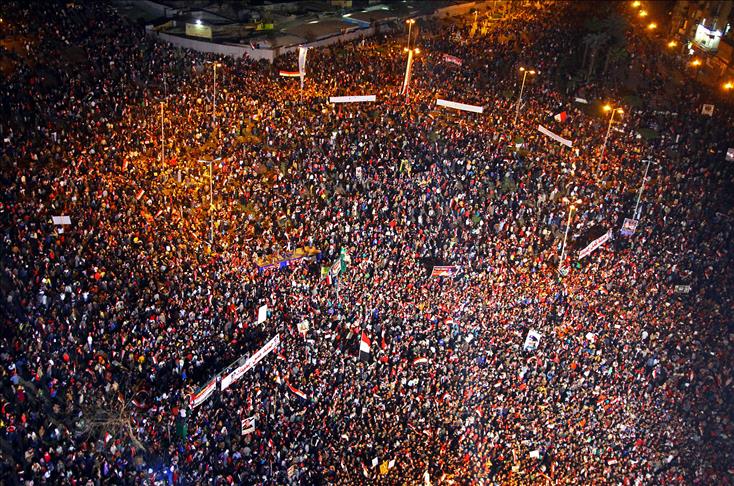
By Sare Selvi Ozturk
ISTANBUL
The Middle East has not always been a safe haven for artists due to its long history of wars. But those who have persevered have tended to produce their work by making use of the available material - war and conflict.
Rabih Mroue, a Lebanese actor, director, playwright and visual artist, is one of those. His work, ranging from early videos to components from his much-lauded, multi-layered work about the conflict in Syria, called "Pixelated Revolution," will be on display at Istanbul’s SALT Gallery until July 27.
The exhibition is spread across SALT Galata and SALT Beyoglu. The works at SALT Galata are related to the personal experiences of the artist, and loosely follow a suggested life-cycle. Those presented at SALT Beyoglu address social discontent, political demonstrations, and social uprisings.
Rooted in the firsthand experience of political unrest and social upheaval still present in Lebanon today, Mroue's works question, probe and examine the use of images, the mechanisms of storytelling and the construction of historical and personal narratives.
The first work with which one is confronted at SALT Galata, titled "Old House" (2003), establishes Mroue's strength in analyzing various forms of control and suppression -- and their reversal as his artistic strategy.
The artist's rumination on forgetting and remembering is followed by the video "Face A/Face B" (2002) which features Mroue recounting an act of censorship. In the process, the work exposes the fragility and irrationality of a government and its failure in resolving social tensions caused by sectarian divisions.
Catherine Deneuve calling out the artist's name while walking against the backdrop of bullet-riddled buildings and rubble in the installation "Je Veux Voir" (2011), as well as the video "Noiseless" (2006-2008), featuring the artist's collection of newspaper clippings portraying himself as a missing person, recall the practice of "enforced disappearance" systematically used during Lebanon's civil war. The practice continued during the periods of occupation by Israel (1982–2000) and the 15 years of Syrian military presence that ended in 2005. Alluding to the fate of the more than 17,000 people still missing is the video installation "The Mediterranean Sea" (2011), which ends the suggested life-cycle.
The other half of the exhibition, presented on the first floor of SALT Beyoglu, is composed in direct reference to the political rallies and mass protest. The display begins with "People are Demanding" (2011), which comprises the phrase in Arabic "Ash sha'ab yurid..." That was the first half of a slogan that was first used during the uprising in Tunis and that later became a popular chant at Cairo's Tahrir Square as well as in Beirut and Syria with alterations. The first part of the slogan is written in spray paint—followed by a list of seemingly ordinary verbs instead of the rest of the phrase commonly used during the protests, "...bring down the regime."
This is followed by Mroue's video "With Soul With Blood" (2003-2006), in which the artist ruminates about being part of a crowd while struggling to remain an individual during one of the demonstrations following the still-unsolved 2005 assassination of former Lebanese prime minister Rafik Hariri. Hariri's car-bomb killing led to huge pro- and anti-Syria rallies in Beirut, which triggered the fall of the government and the withdrawal of the Syrian military.
Today, the civil war in Syria has spilled into Lebanon, and there is a massive influx of Syrian refugees in the country, making up nearly one seventh of the population. "Eye vs. Eye" (2012), "Double Shooting" (2012) and the first part of "The Fall of a Hair" (2012) are all components of Mroue's much-lauded work about the conflict in Syria, "The Pixelated Revolution" (2012), which examines the dissemination of amateur war footage on video-sharing websites and the multi-layered associations between shooting with a gun and shooting with a camera.
englishnews@aa.com.tr
Anadolu Agency website contains only a portion of the news stories offered to subscribers in the AA News Broadcasting System (HAS), and in summarized form. Please contact us for subscription options.

